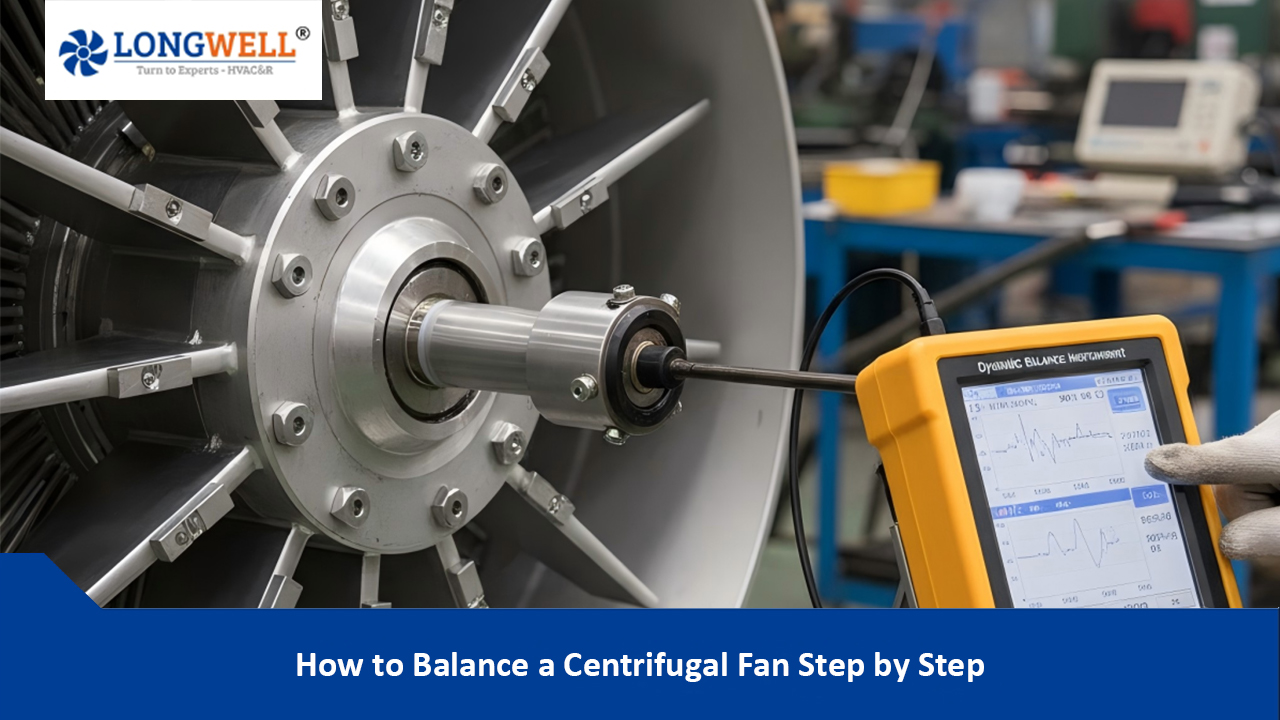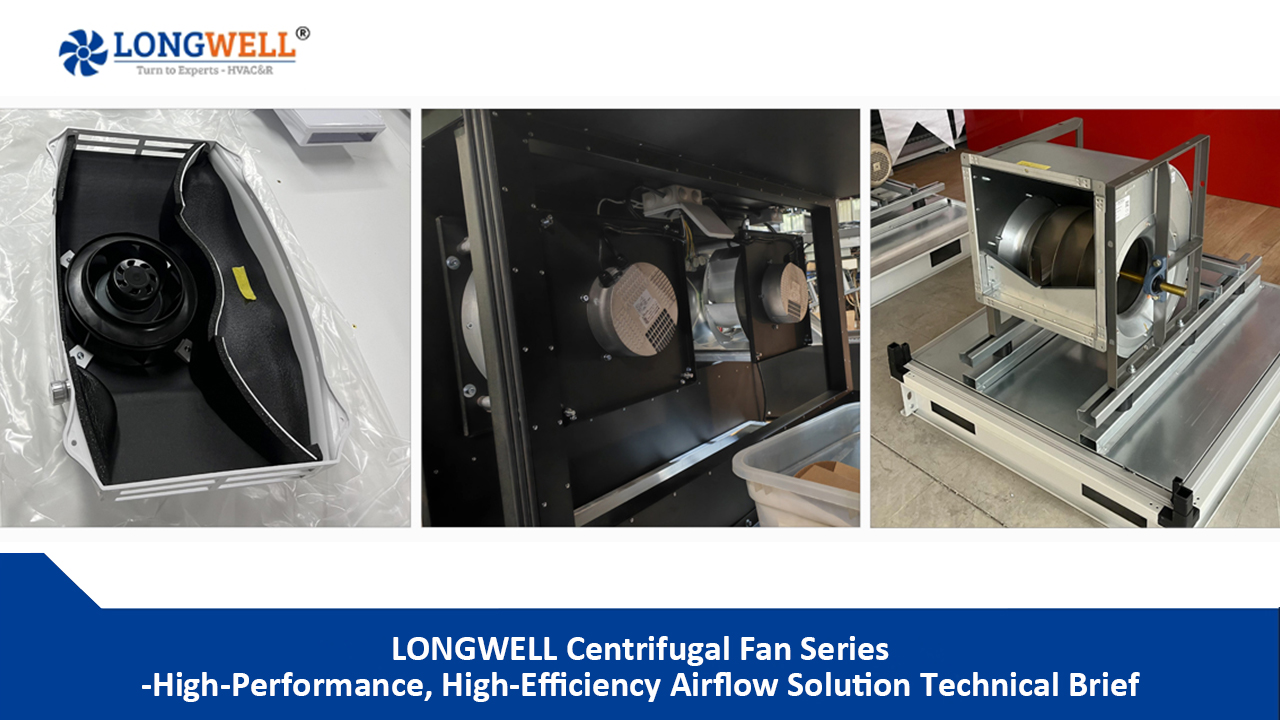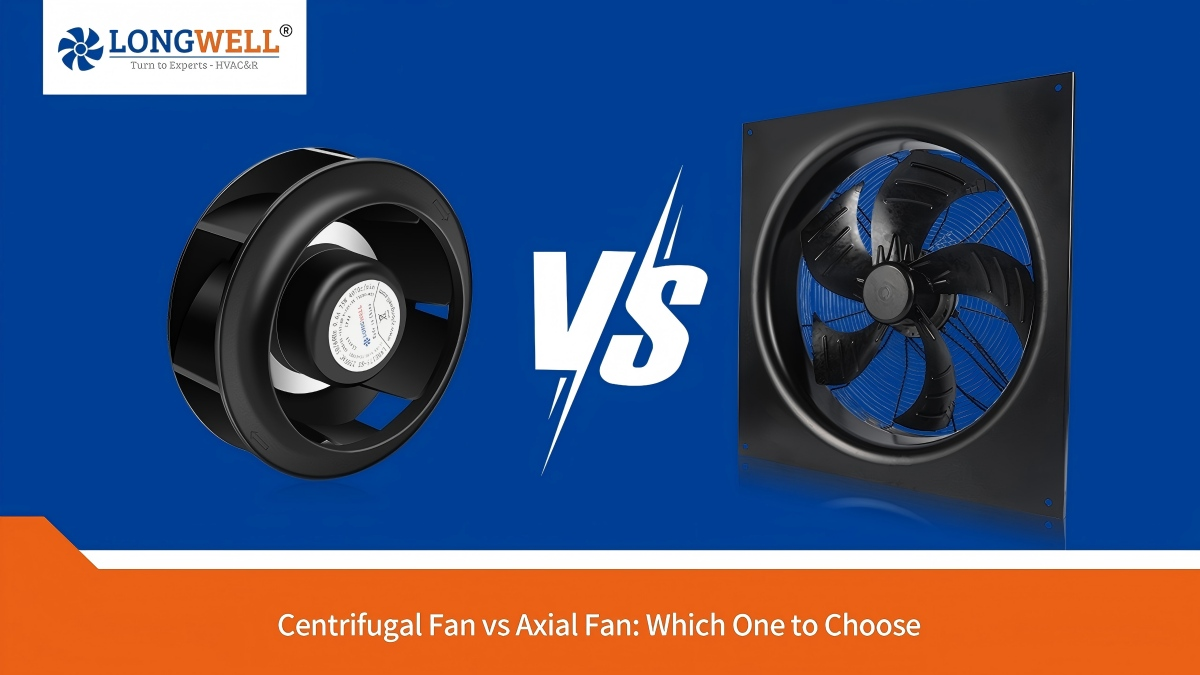I. The Strategic Importance of Industrial Ventilation and LONGWELL’s Vision
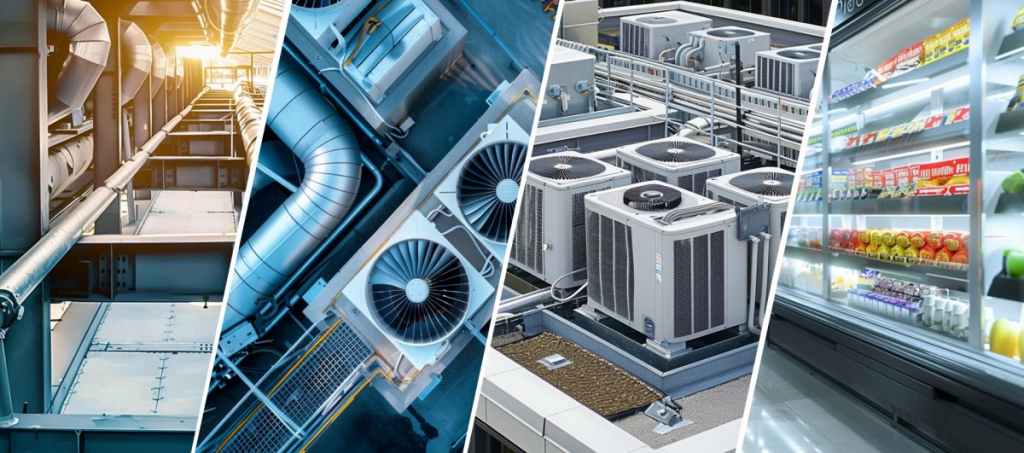
Industrial ventilation systems play a crucial role in modern industrial production. They are not only fundamental to maintaining healthy and safe working environments but are also key to enhancing production efficiency, reducing operating costs, and achieving sustainability goals. With accelerating global industrialization and increasingly stringent environmental regulations, the global industrial ventilation equipment market is undergoing unprecedented growth and transformation.
The global industrial ventilation equipment market is vast and shows strong growth momentum. In 2021, the market was valued at $9.0 billion and is projected to climb to $18.2 billion by 2031, with a compound annual growth rate (CAGR) of 7.3% from 2022 to 2031. This significant growth is primarily driven by increased industrial construction worldwide and a growing focus on indoor air quality and worker health. Notably, the Asia-Pacific region dominated the global industrial ventilation equipment market in 2021 and is expected to maintain this trend during the forecast period. This is attributed to population growth, urbanization, and flourishing industries in countries like China, India, and Japan.
The global industrial ventilation market, particularly in the industrial fan sector, is experiencing robust growth. The global industrial fans and blowers market was valued at $23.49 billion in 2024 and is projected to grow significantly to $36.98 billion by 2034, with a high CAGR of 4.64%. These figures indicate that market growth is not just about quantitative expansion; it is driven by accelerating global industrialization, increasing concerns about air quality, and stricter government regulations worldwide. This regulated growth means that businesses cannot rely solely on traditional solutions but must shift towards more efficient, environmentally friendly, and intelligent ventilation solutions.
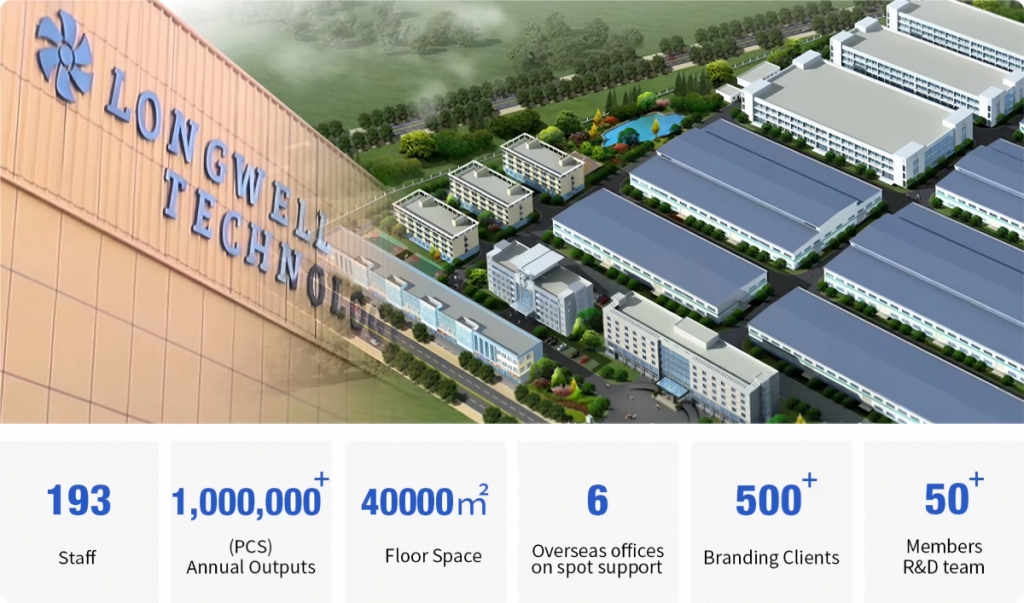
Ningbo Longwell Electric Co., Ltd. (LONGWELL), as an enterprise deeply rooted in the industrial ventilation sector, its strategic location in Ningbo, China, allows it to directly benefit from the rapid growth in the Asia-Pacific region. This regional advantage, combined with strong market demand for high-quality, compliant solutions, provides LONGWELL with a unique strategic opportunity to meet and exceed global market expectations, thereby solidifying its market leadership.
LONGWELL is committed to providing high-quality fan products globally, aiming to create healthier breathing environments. The company aspires to be the world’s largest fan product supplier, and provide the most comprehensive fan solutions. LONGWELL’s product line is extensive, including axial fans, centrifugal fans, inline duct fans, exhaust fans, and boasts significant advantages in core technologies such as EC motor efficiency, intelligent control, and electrical protection. LONGWELL’s mission, “Providing quality fans for healthier breathing environments,” aligns perfectly with the global market’s increasing focus on “air quality” and “worker health.” This precise alignment between its mission and market pain points gives LONGWELL a natural advantage in its brand narrative. It can attract customers seeking technological solutions and those who prioritize employee well-being and corporate social responsibility, thereby broadening its global market appeal.
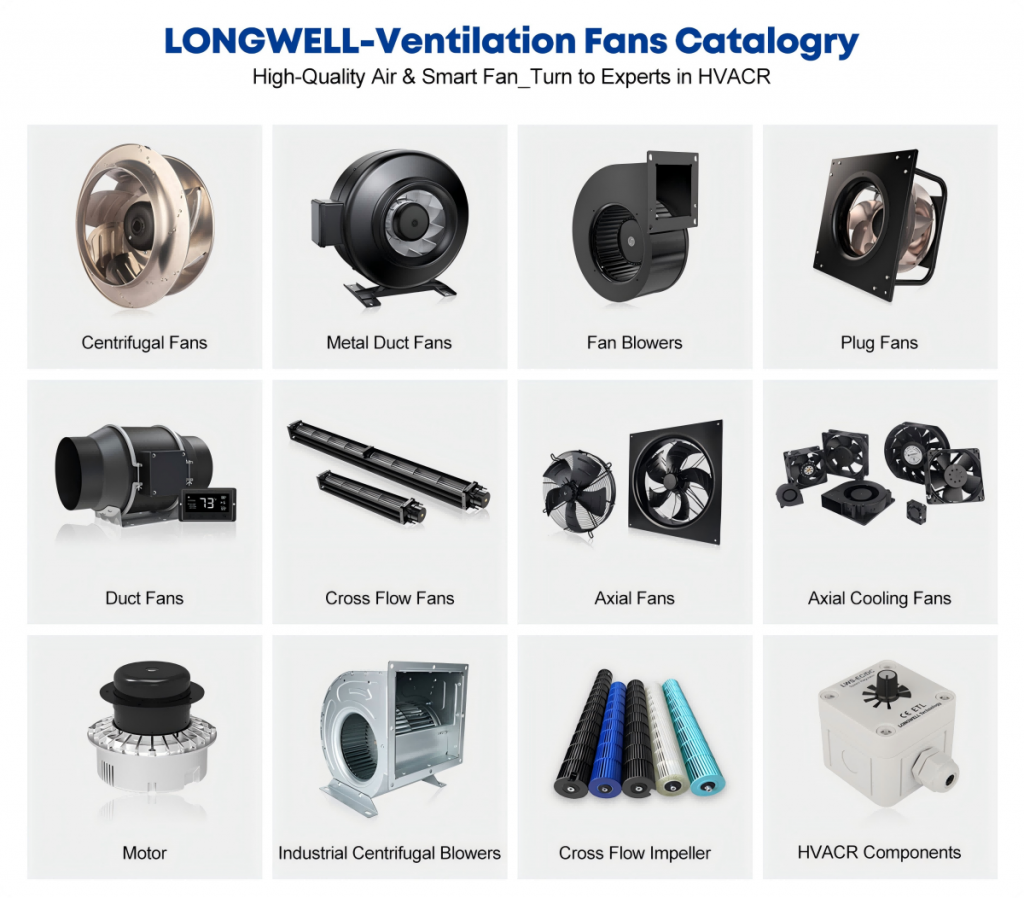
II. Market Insights and Target Audience Profiling
Industrial Ventilation Market Overview and Key Drivers
The global industrial ventilation equipment market is experiencing significant growth, driven by multiple factors. Firstly, population growth in developing economies (such as China, India, and the United States) has led to rapid industrialization, which directly drives demand for industrial ventilation equipment in sectors like oil and gas, chemicals, and manufacturing. Secondly, increasing concerns about air quality and worker health are another significant growth factor. Poor indoor air quality is recognized to have a substantial impact on human and labor health, leading to a surge in demand for industrial ventilation equipment.
Furthermore, increasingly stringent government regulations globally concerning air quality improvement, worker health, energy efficiency, and environmental emissions constitute powerful drivers for market growth. These regulations not only raise compliance thresholds but also compel businesses to seek more advanced ventilation technologies. Technologically, the integration of emerging technologies like the Internet of Things (IoT) and Artificial Intelligence (AI), along with the advent of smart ventilation systems, creates unprecedented opportunities for market expansion. Finally, there is a continuously growing market demand for energy-efficient, sustainable, and customized solutions, reflecting the industrial sector’s increasing emphasis on environmental responsibility alongside economic benefits.

In terms of key application areas, manufacturing is the largest end-user of industrial ventilation equipment, accounting for over 25% of the market share in 2023. Industrial facilities hold a significant market share due to their need to maintain optimal indoor air quality and comply with strict safety regulations.

There is significant synergy between these market drivers and LONGWELL’s core competencies. Market growth is not uniform but is driven by specific “pain points” and “policies.” Concerns about air quality and worker health, coupled with strict regulations, provide a “push,” while technological advancements like IoT and AI offer a “pull.”
LONGWELL’s technological advantages in EC motor efficiency, intelligent control, and electrical protection perfectly align with these drivers. This means LONGWELL can not only meet existing demand but also lead the market through its innovative technologies, transforming regulatory compliance and energy saving into competitive advantages and new growth points.
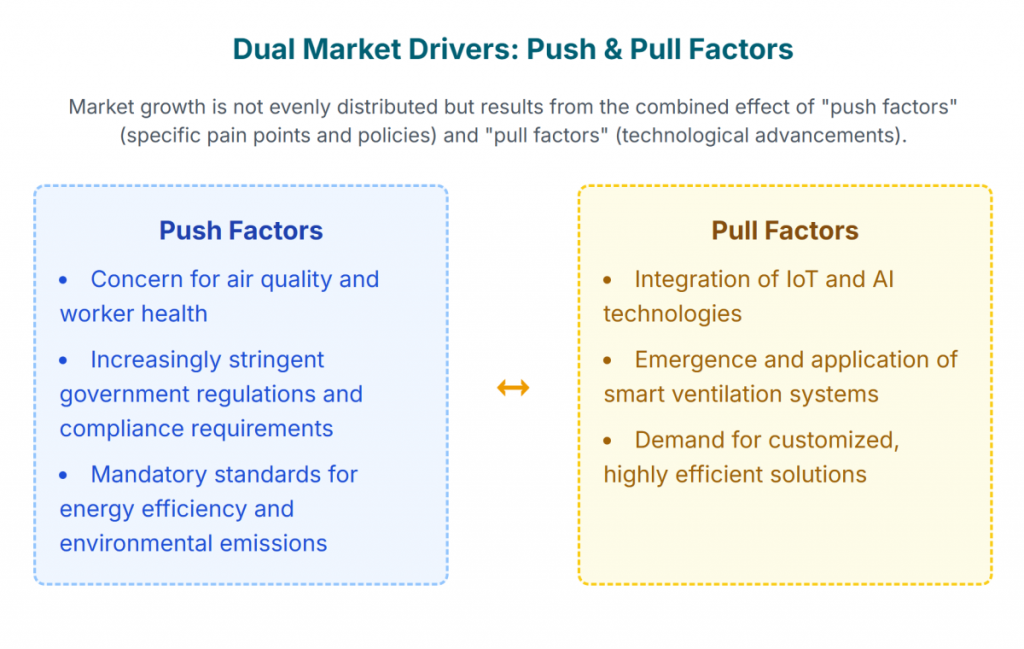
Ideal Customer Profile (ICP) and User Persona
To serve customers more precisely, understanding their core needs and challenges is crucial. Procurement decisions for industrial ventilation equipment typically involve multiple stakeholders, with factory managers and facility engineers being key influencers.
Factory Manager:
The factory manager’s core responsibility is to oversee daily operations, ensuring production efficiency, workplace safety, and product quality meet standards. They bear significant responsibility for employee safety, health, and welfare, and manage production planning, quality control, cost management, equipment maintenance, and employee supervision. Additionally, factory managers must ensure compliance with all relevant laws and regulations, including labor, environmental, and safety laws. Regarding ventilation, their main pain points include reducing operating costs (especially energy consumption), improving production efficiency, ensuring the work environment meets safety and health standards, minimizing unplanned downtime, and avoiding legal risks and penalties due to environmental issues.
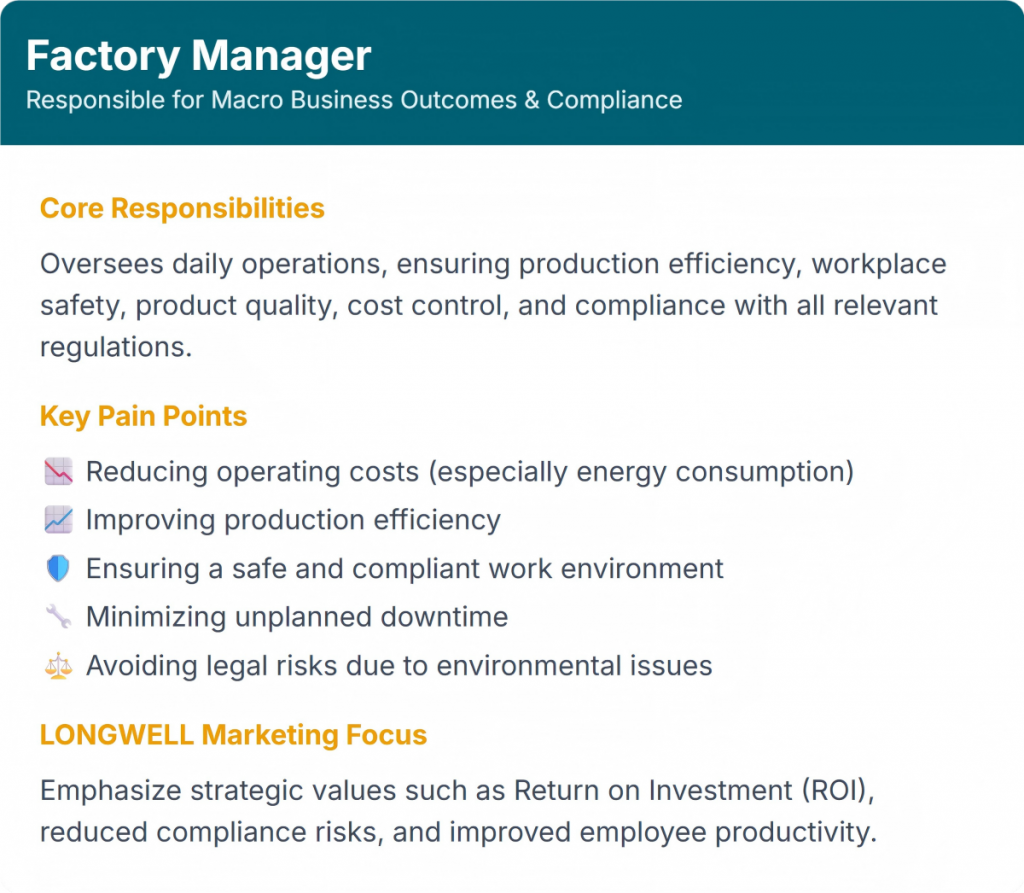
Facility Engineer:
Facility engineers are primarily responsible for overseeing and coordinating personnel who maintain electrical, plumbing, ventilation, refrigeration, and other building systems. They are responsible for heating, water supply, electrical, and telecommunications systems within buildings, and may participate in system design and installation or supervise their maintenance. Ensuring work complies with building codes and health and safety requirements is part of their daily duties. For ventilation systems, facility engineers focus on their design, installation, maintenance, and operational efficiency. They need to ensure that systems can effectively remove pollutants, maintain stable airflow and temperature, are easy to maintain, and can integrate with existing facility management systems.
Procurement decisions for industrial ventilation equipment typically involve multiple stakeholders. Factory managers focus on macro business outcomes and compliance, while facility engineers are more concerned with technical details, implementation, and daily operations. Therefore, LONGWELL’s marketing content needs to address both perspectives. For factory managers, the emphasis should be on strategic value such as return on investment (ROI), reduced compliance risks, and improved employee productivity; for facility engineers, the focus should be on product technological advancement, reliability, ease of maintenance, intelligent control features, and compatibility with existing systems. Clearly communicating this dual value proposition will help LONGWELL gain broader recognition within the decision-making chain.
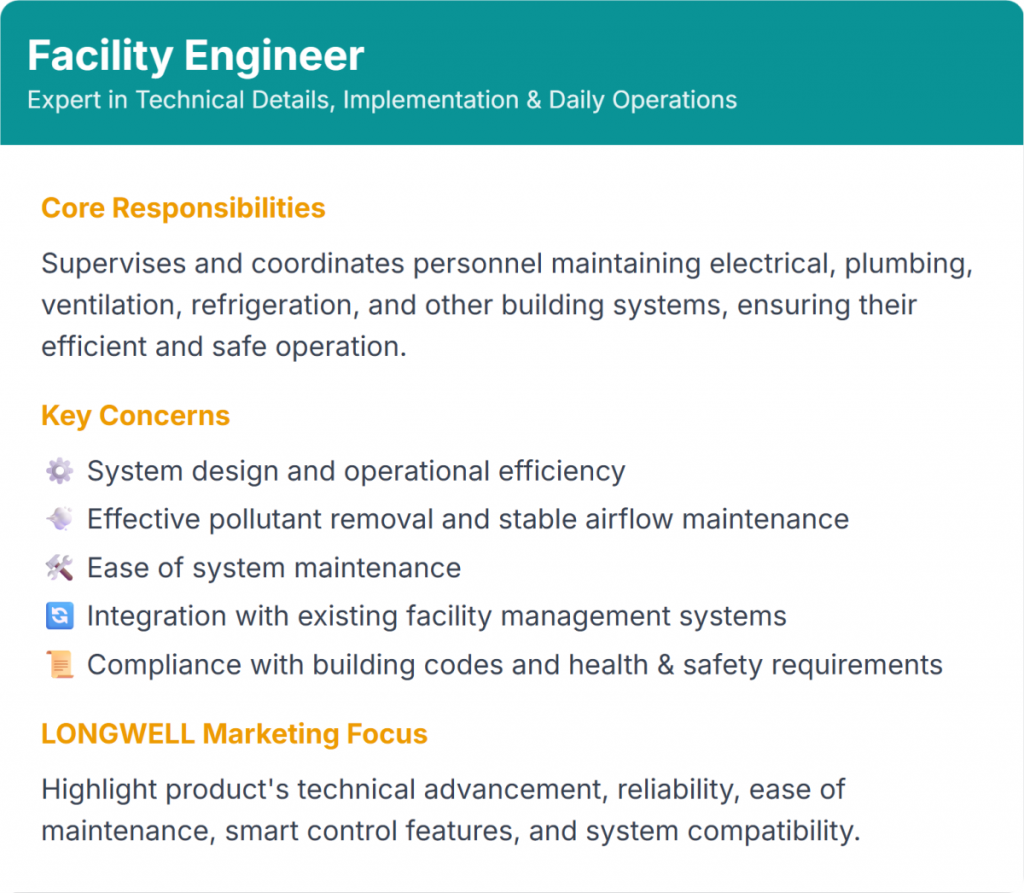
LONGWELL Core Customer Industry Distribution
LONGWELL’s service scope extends far beyond traditional manufacturing, chemicals, and mining. According to official information, LONGWELL’s ventilation technology is widely applied in central residential ventilation, decentralized residential ventilation, air purifiers, heat pumps, harvest storage rooms, greenhouses, livestock farming, and vertical agriculture. In air conditioning technology, LONGWELL’s solutions serve industrial building air handling units (AHUs), fan coil units, rooftop fans, and data center server cooling. Refrigeration solutions are applied in evaporators, refrigeration and freezing units, and condensing units. Furthermore, LONGWELL’s drive technology also finds extensive applications in automation, medical technology, intralogistics, and access control.
LONGWELL’s broad industry coverage, extending beyond manufacturing, chemicals, and mining, indicates the strong versatility and adaptability of its products and technology. This extensive industry reach, combined with LONGWELL’s ability to provide customized solutions, means that LONGWELL can offer highly tailored professional solutions for the unique needs of various industries (including manufacturing, chemicals, and mining), rather than standardized products. This not only enhances its market competitiveness but also lays the foundation for future deep engagement in specific high-risk or high-demand industries (such as chemicals and mining).
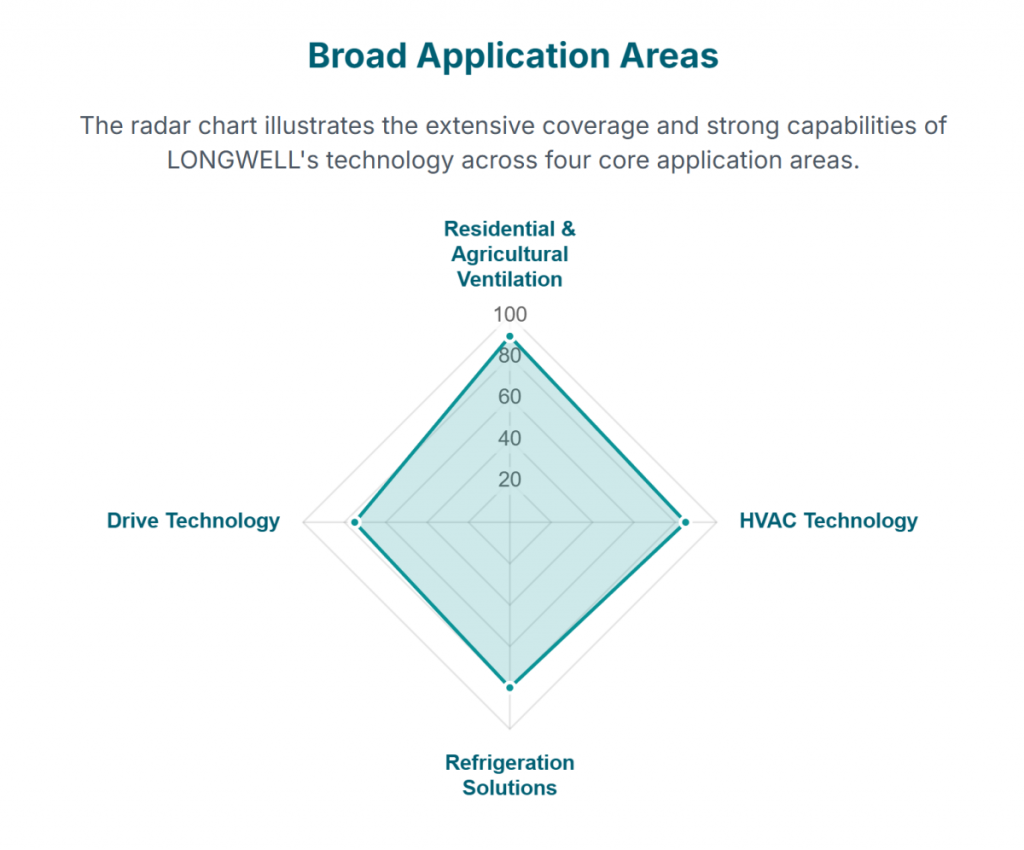
Global Industrial Ventilation Market Size and Growth Forecast
The table below presents key data for the global and Asia-Pacific industrial ventilation markets, highlighting the immense potential and strategic opportunities for LONGWELL in this sector.
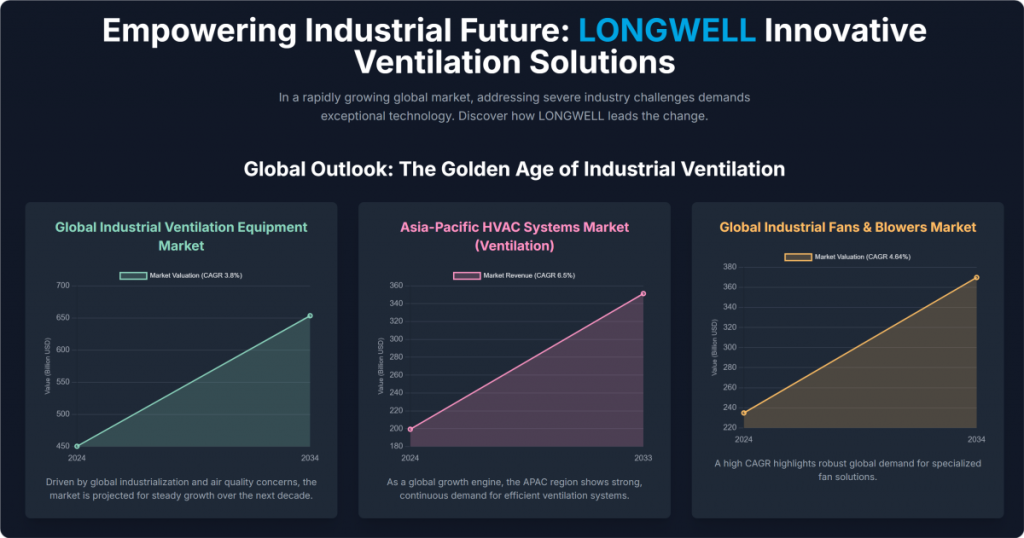
| Market Region/Type | Valuation/Revenue (Base Year) | Forecast (End of Forecast Period) | Compound Annual Growth Rate (CAGR) |
| Global Industrial Ventilation Equipment Market | $45.04 Billion (2024) | $65.35 Billion (2034) | 3.8% (2025-2034) |
| Asia-Pacific HVAC Systems Market (Ventilation Segment) | $19.937 Billion (2024) | $35.132 Billion (2033) | 6.5% (2025-2033) |
| Global Industrial Fans & Blowers Market | $23.49 Billion (2024) | $36.98 Billion (2034) | 4.64% (2025-2034) |
These data clearly establish the strategic importance and attractiveness of the industrial ventilation industry. The vast market size and considerable growth rates, particularly in the Asia-Pacific region and the global industrial fan market, provide a solid foundation for LONGWELL’s sustained development. These figures also support the subsequent discussion of industry challenges, technological trends, and LONGWELL’s future strategies, indicating that LONGWELL’s efforts are taking place in a dynamic global market, and its technological innovations and market strategies will directly impact its position in this rapidly growing sector.
III. Core Challenges in Industrial Ventilation: How LONGWELL Empowers Enterprises with Innovative Solutions
The complexity of global industrial production environments poses severe challenges to ventilation systems. Factory managers and facility engineers face multiple pain points in ensuring efficient, safe, and compliant ventilation. LONGWELL, with its forward-thinking technology and comprehensive solutions, is systematically overcoming these obstacles.
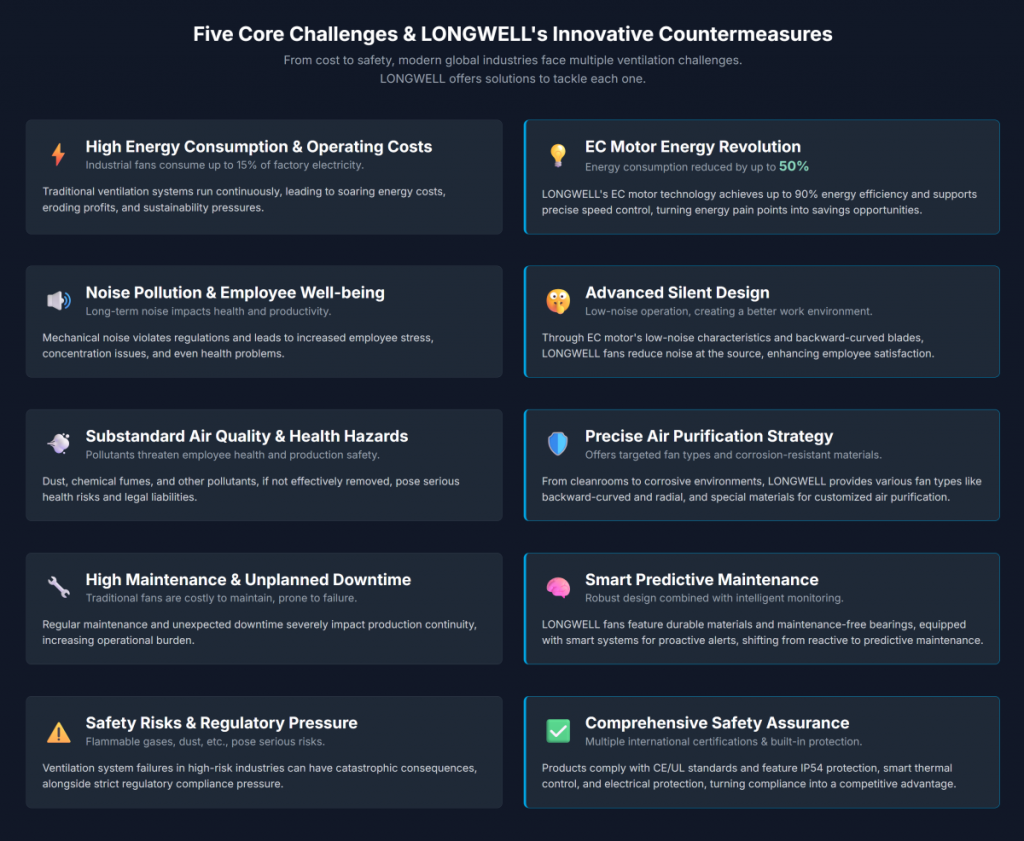
Challenge One: High Energy Consumption and Soaring Operating Costs – LONGWELL’s EC Motor Energy Revolution
Global industrial facilities, especially those operating 24/7, face significant energy consumption challenges. Machinery, equipment, and production processes generate substantial heat, which not only makes the work environment uncomfortable but also reduces equipment efficiency and increases wear. Traditional ventilation systems often consume alarming amounts of energy when dealing with these heat loads, leading to exponential increases in operating costs. For instance, specialized building types like laboratories, due to their high ventilation rates and continuous operation, have extremely high energy consumption per unit area. Furthermore, older HVAC systems often lack data visibility and remote control options, making it difficult to implement occupancy-based temperature adjustments or airflow reductions, further exacerbating energy inefficiency. According to statistics, industrial fans account for approximately 15% of manufacturing facilities’ electricity consumption, making energy consumption a critical pain point that global enterprises must prioritize.

LONGWELL’s solution is centered on its outstanding EC motor technology. This technology ingeniously combines the advantages of AC (Alternating Current) and DC (Direct Current) motors, enabling energy efficiency of up to 90%. Compared to traditional motors, LONGWELL’s EC motors can reduce energy consumption by up to 50%, bringing significant cost savings to businesses. EC motors also support precise speed control, allowing users to adjust airflow according to real-time demands, especially suitable for applications requiring variable air volume control, further optimizing energy consumption. High energy consumption is not just a direct reflection of operating costs; it is also a sustainability challenge that businesses must address in an increasingly climate-conscious society. Obsolete equipment and continuous operation exacerbate this problem.
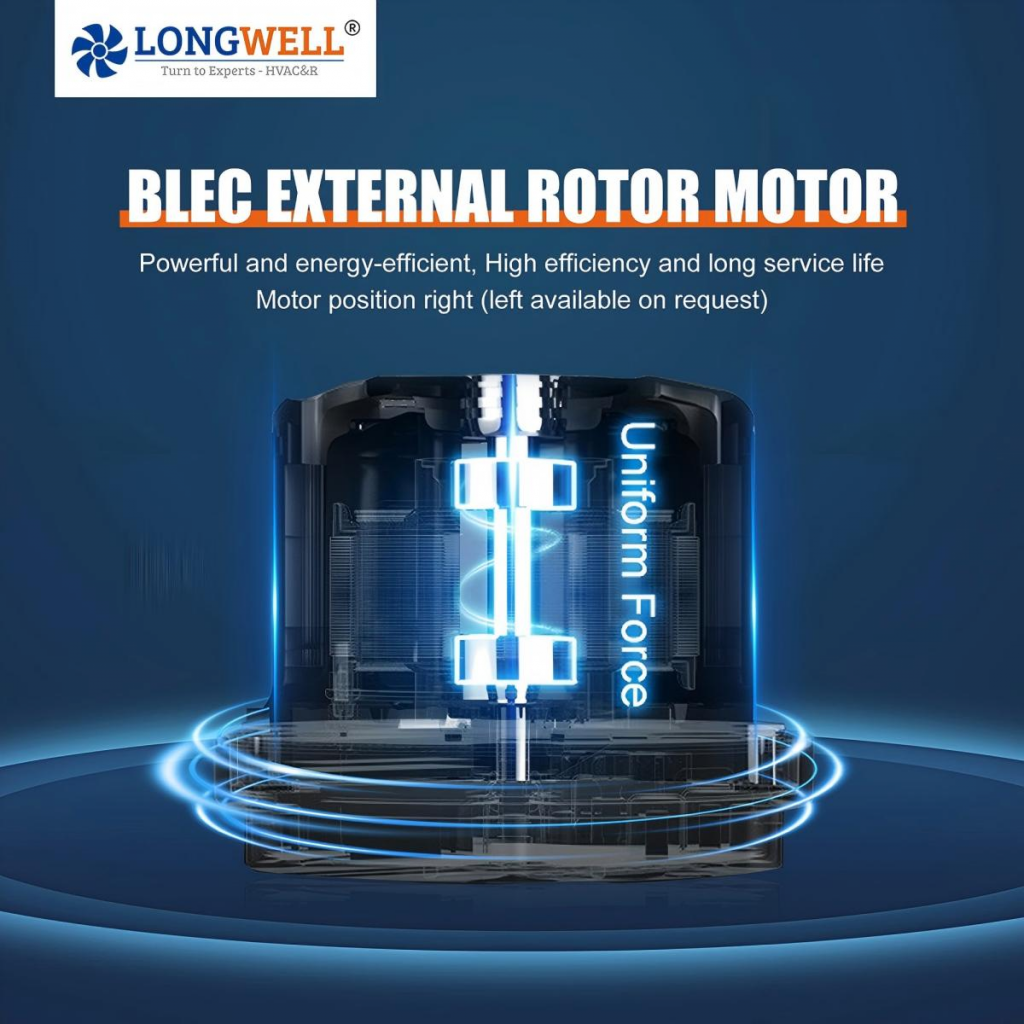
LONGWELL’s EC motor technology is not merely a “more efficient” alternative; it represents a fundamental solution that can transform the “pain point” of high energy consumption into an “opportunity” for businesses to achieve “energy saving and emission reduction” and “sustainability goals.” By significantly reducing energy consumption, LONGWELL directly helps its global customers improve profitability and enhance their environmental, social, and governance (ESG) performance.
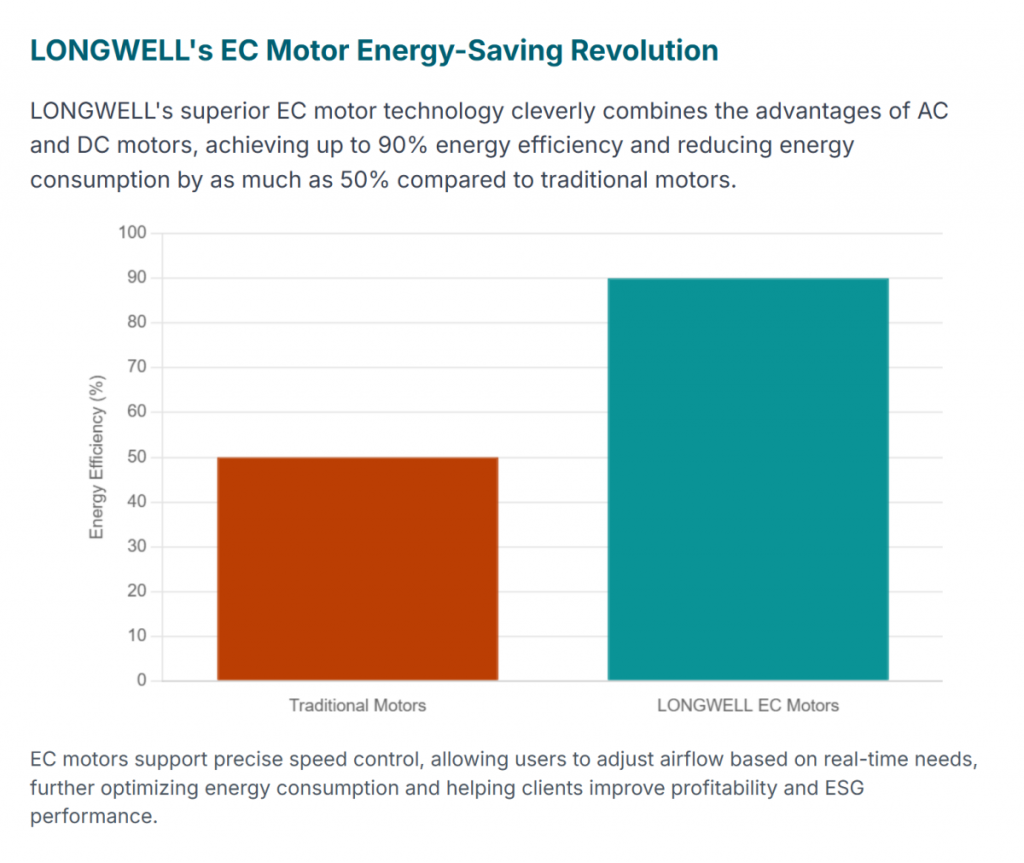
Learn how LONGWELL’s EC motor technology can help you save energy and boost efficiency.
Challenge Two: Noise Pollution and Employee Well-being – LONGWELL’s Silent Ventilation Solutions
Noise pollution in global industrial environments is an often-overlooked yet far-reaching issue. It primarily originates from machinery and production processes in factories and warehouses, such as fans, impact processes, and various motor-driven equipment. Long-term exposure to high noise levels is not only irritating but can also lead to serious health problems, including permanent hearing loss, tinnitus, distraction, increased stress, fatigue, high blood pressure, and even cardiovascular diseases. These health issues, in turn, affect employee productivity and can cause “noise annoyance,” leading to negative emotions such as unease, irritability, and dissatisfaction. In many countries and regions, laws explicitly stipulate that businesses generating high noise levels must take measures for industrial sound insulation, such as using acoustic louvers or specialized ventilation systems.
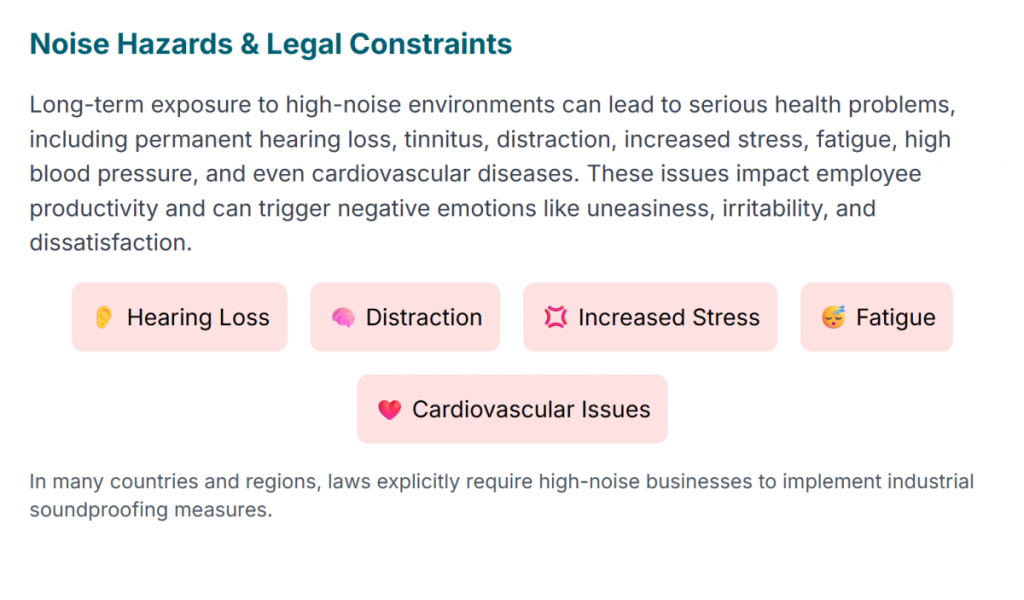
LONGWELL employs multiple strategies to address noise issues. LONGWELL fans are designed with advanced silent technology from the outset, ensuring smooth and low-noise operation, making them suitable for industrial, commercial, and various noise-sensitive ventilation needs. Its core EC motor technology inherently features low heat and low noise, which makes EC-powered fans ideal for environments requiring quiet operation and high reliability. Furthermore, LONGWELL fans utilize a backward-curved blade design that ensures stable airflow while effectively reducing operational noise. Industrial noise is not just an environmental issue; it is a critical factor directly impacting employee health and productivity and is subject to global laws and regulations. LONGWELL’s low-noise design is more than just a product feature; it represents a company’s commitment to employee well-being. By providing a quieter work environment, LONGWELL helps its global customers not only meet regulatory requirements but also enhance employee satisfaction and reduce health risks, thereby indirectly improving productivity and corporate image. Explore LONGWELL’s silent industrial fans to improve your work environment quality.
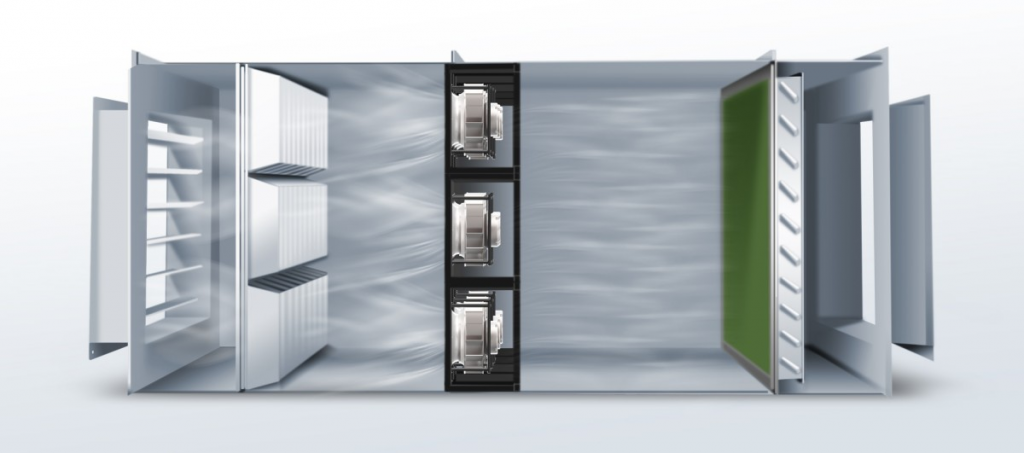
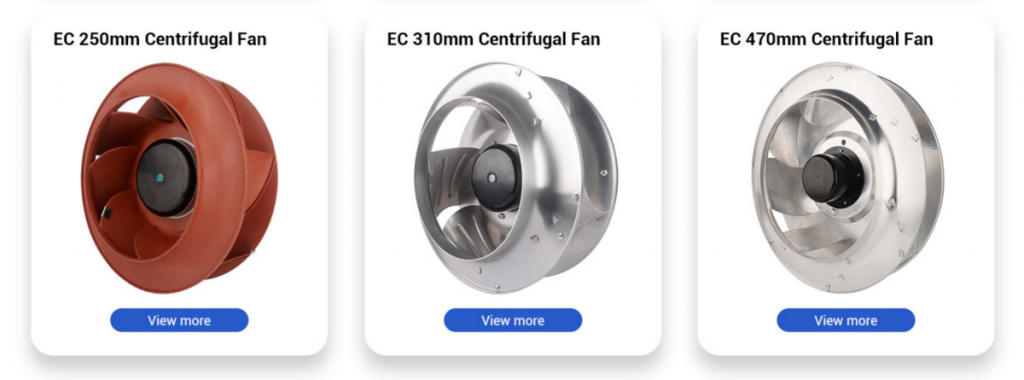
Challenge Three: Substandard Air Quality and Health Hazards – LONGWELL’s Precise Air Purification Strategy
Air pollutants generated during global industrial production pose a severe threat to employee health and production safety. Common pollutants in factories include dust, fumes, aerosols, chemical vapors, biological agents, and various particulate matters. Long-term exposure can lead to serious health problems such as respiratory diseases, cardiovascular issues, and cancer. Different industries face varying types of pollutants and risks:
· Manufacturing: Welding fumes (containing metals like manganese, chromium, nickel), toxic metal particles from metal processing (e.g., lead, iron, nickel, chromium), and fine wood fibers from woodworking all threaten worker health.
· Chemical Industry: The release of toxic or flammable gases, solvent emissions, chemical vapor accumulation, cross-contamination, and hazardous leaks are common in chemical and petrochemical facilities. Ventilation system failures can lead to severe accidents or even explosions.
· Mining: Deep mines present extreme temperatures and humidity, along with the accumulation of dust and gases (such as methane). Additionally, diesel equipment exhaust and gases from explosions also require effective removal.
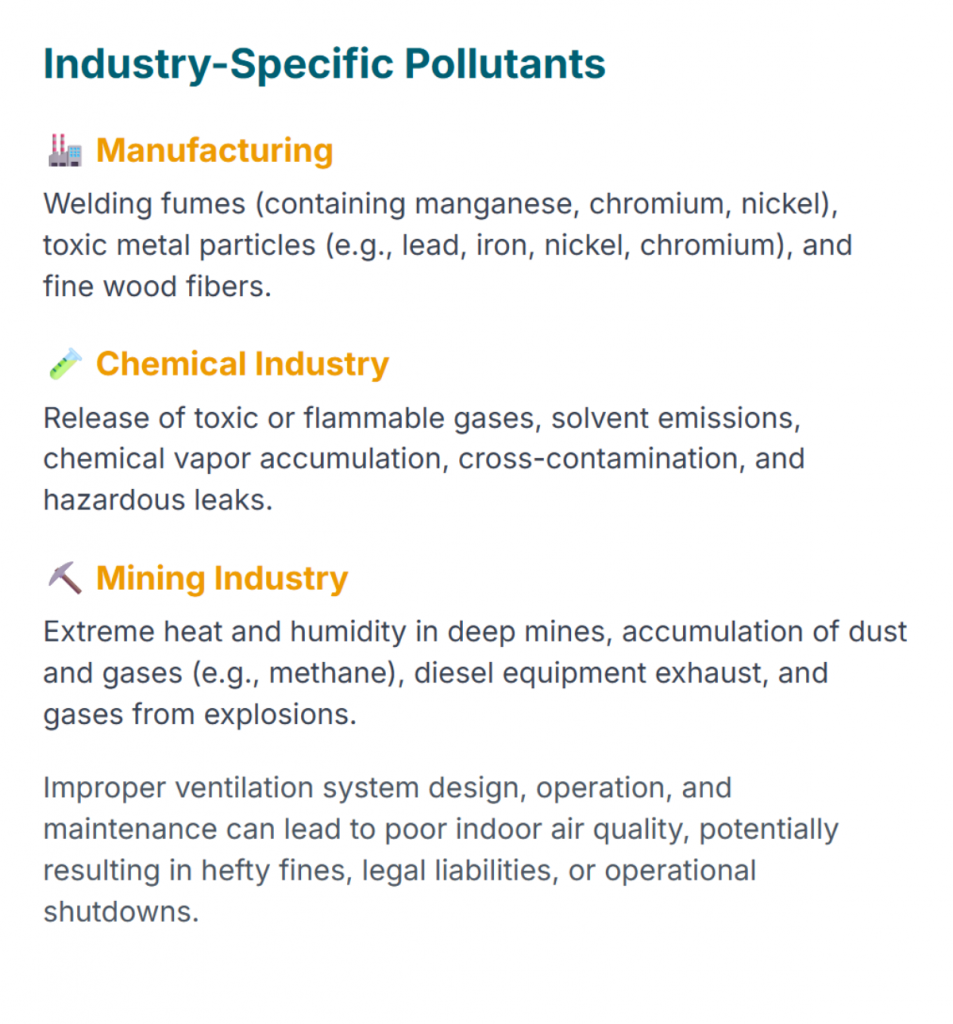
Improper ventilation system design, operation, and maintenance are primary causes of poor indoor air quality, potentially leading to pollutant recirculation indoors or external pollutants entering the workplace. More critically, non-compliant air quality can result in pollutant concentrations exceeding regulatory exposure limits, leading to hefty fines, legal liabilities, or even operational shutdowns.
LONGWELL offers powerful industrial exhaust fans capable of effectively removing heat, fumes, and airborne pollutants from factories, warehouses, and other industrial environments, ensuring safer and more comfortable workspaces. LONGWELL industrial fans can provide high-pressure airflow, effectively removing particulate matter to ensure a clean and safe work environment. To meet the demands of diverse environments, LONGWELL provides a variety of fan types and material options:
· Backward-curved centrifugal fans: Suitable for cleanrooms, data centers, and dust collection applications, effectively filtering pollutants and maintaining air purity.
· Radial/radial tip fans: Specifically designed to handle dirty or dusty air, such as in material handling, and environments with high dust and fiber content, ensuring stable fan operation even in harsh conditions.
· Corrosion-resistant materials: For chemical or corrosive fume environments, LONGWELL offers fans made of stainless steel or specially coated plastics (e.g., polypropylene) to resist corrosion, thereby extending equipment life and ensuring operational safety.
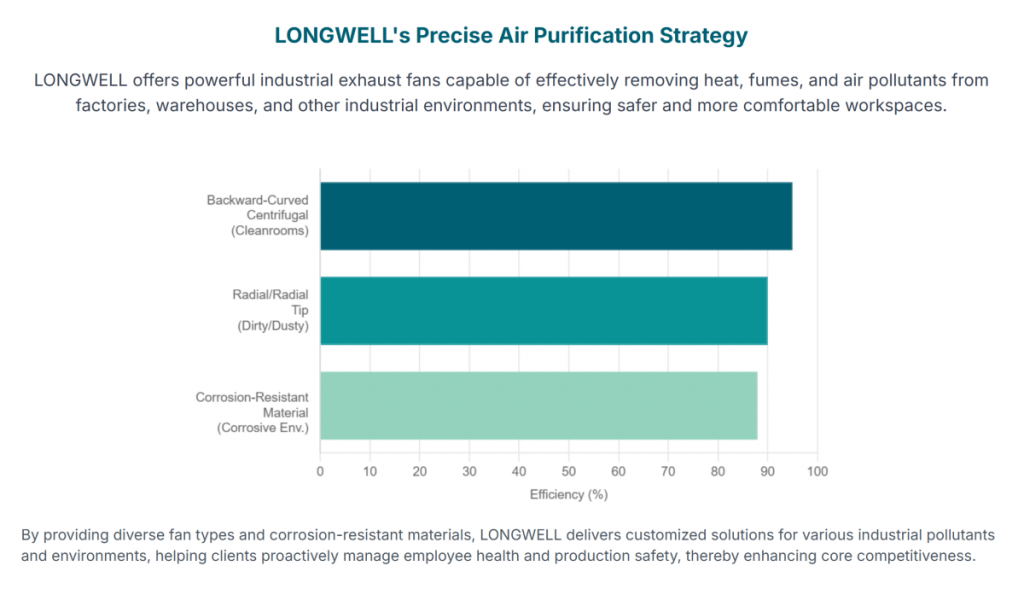
Indoor air quality issues directly threaten employee health and safety and carry significant compliance and legal risks. Different industries have their unique pollutants and risks. LONGWELL, by offering a diverse range of fan types and corrosion-resistant materials, provides “customized” solutions for various industrial pollutants and environments. This demonstrates that LONGWELL not only helps global customers meet minimum compliance standards but also, through professional and precise ventilation solutions, assists them in achieving “proactive management” of employee health and production safety, thereby enhancing their core competitiveness. Explore LONGWELL’s industrial exhaust fan series to ensure air quality.
The table below details LONGWELL fan types and their applicability in specific contaminant/environment scenarios, showcasing their professionalism and adaptability in complex industrial settings.
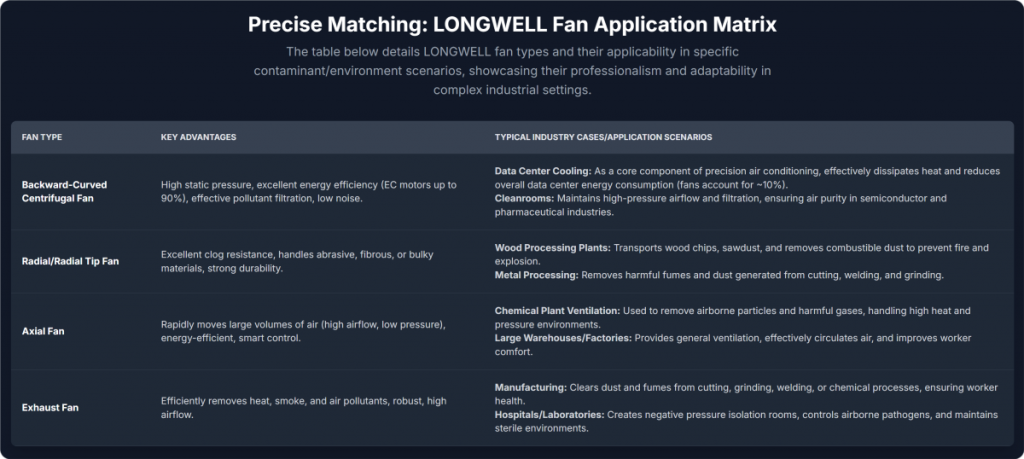
| Fan Type | Key Advantages | Typical Industry Cases/Application Scenarios |
| Backward-Curved Centrifugal Fan | High static pressure, excellent energy efficiency (EC motors up to 90%), effective pollutant filtration, low noise. | Data Center Cooling: As a core component of precision air conditioning, effectively dissipates heat and reduces overall data center energy consumption (fans account for ~10%). Cleanrooms: Maintains high-pressure airflow and filtration, ensuring air purity in semiconductor and pharmaceutical industries. |
| Radial/Radial Tip Fan | Excellent clog resistance, handles abrasive, fibrous, or bulky materials, strong durability. | Wood Processing Plants: Transports wood chips, sawdust, and removes combustible dust to prevent fire and explosion. Metal Processing: Removes harmful fumes and dust generated from cutting, welding, and grinding. |
| Axial Fan | Rapidly moves large volumes of air (high airflow, low pressure), energy-efficient, smart control. | Chemical Plant Ventilation: Used to remove airborne particles and harmful gases, handling high heat and pressure environments, e.g., a chemical plant customized a 110,000 CFM axial fan for high heat/pressure and particulate removal. Large Warehouses/Factories: Provides general ventilation, effectively circulates air, and improves worker comfort. |
| Exhaust Fan | Efficiently removes heat, smoke, and air pollutants, robust, high airflow. | Manufacturing: Clears dust and fumes from cutting, grinding, welding, or chemical processes, ensuring worker health. Hospitals/Laboratories: Creates negative pressure isolation rooms, controls airborne pathogens, and maintains sterile environments. |
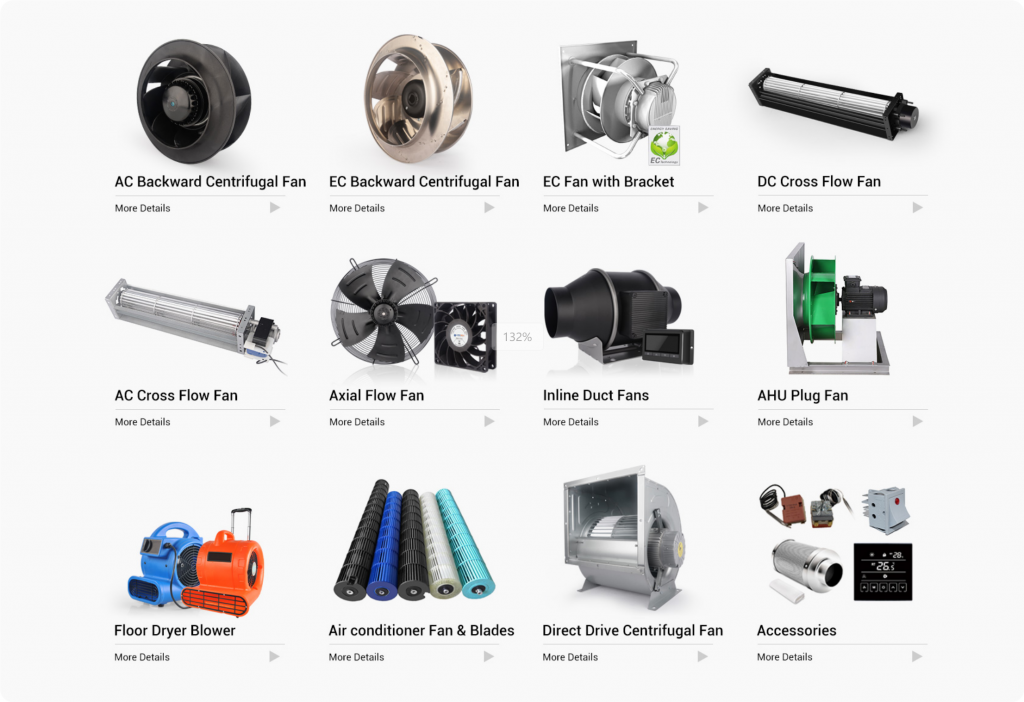
IV. Industrial Ventilation Fan Industry Latest Trends and LONGWELL’s Future Strategy
The global industrial ventilation fan industry is undergoing rapid transformation, with emerging technologies, regulatory changes, and market demands collectively shaping its direction. LONGWELL, as an industry innovator, is actively adapting to and leading these trends.
Emerging Technologies: Smart Ventilation, IoT, and AI Integration
Industrial ventilation systems are evolving from traditional passive operations to intelligent, connected, and adaptive solutions.
· Smart Ventilation Systems: Smart ventilation systems automatically adjust airflow based on real-time conditions (such as occupancy, indoor air quality, and outdoor weather conditions). These systems optimize ventilation rates, significantly reducing energy waste, while continuously monitoring and adjusting to improve air quality. By detecting issues early, smart systems also enable preventive maintenance, thereby extending system lifespan. Their core mechanism involves sensors (e.g., CO2, humidity, temperature, occupancy) collecting data, and a central control unit using algorithms to determine the most effective ventilation strategy at any given time, enabling on-demand ventilation.
· Deep Integration of Internet of Things (IoT) in Fan Control: IoT technology is making industrial fans “smarter” and more controllable. IIoT (Industrial Internet of Things) sensor systems can monitor vibrations, motor/bearing/drive temperatures and speeds, airborne dust and moisture content, and power input in real-time. This offers numerous advantages, including real-time monitoring, remote access, and adaptive responses to environmental changes. Through IoT integration, businesses can ensure personnel health and safety, reduce operating and maintenance costs, maximize efficiency and output, minimize power consumption, reduce unpredictable downtime, and extend machinery life. For example, IoT-based temperature-controlled fan systems can precisely adjust fan speed based on real-time temperature data, significantly improving energy efficiency and equipment lifespan.
· Breakthroughs in AI for Fan Performance Optimization and Predictive Maintenance: Artificial intelligence is elevating fan control and maintenance to new levels. AI applications, combined with advanced machine learning models and large-scale optimization, can predict physical variables (such as humidity and temperature) and determine optimal operating conditions to minimize total energy consumption. AI-driven predictive cooling systems, through comprehensive analysis of temperature data, airflow patterns, and equipment cooling efficiency, can identify inefficient areas and automatically adjust cooling system output. This not only reduces energy consumption and carbon emissions but also minimizes equipment wear, shortens downtime, and extends equipment life. AI makes the transition from reactive to proactive maintenance possible, even predicting and preventing failures weeks before they occur.
Traditional ventilation systems are static, while the integration of smart ventilation, IoT, and AI represents a fundamental shift from “automation” to “intelligent decision-making.” This is not just a technological upgrade but a revolution in operational models. LONGWELL already possesses the foundation of intelligent control systems, giving it a head start in facing the challenges of the global Industry 4.0 era. In the future, LONGWELL can deepen the application of AI algorithms in predictive maintenance and energy optimization, positioning itself as a “smart air management solution provider” rather than just a fan manufacturer, thereby standing out in the competitive global market and creating deeper value for customers.
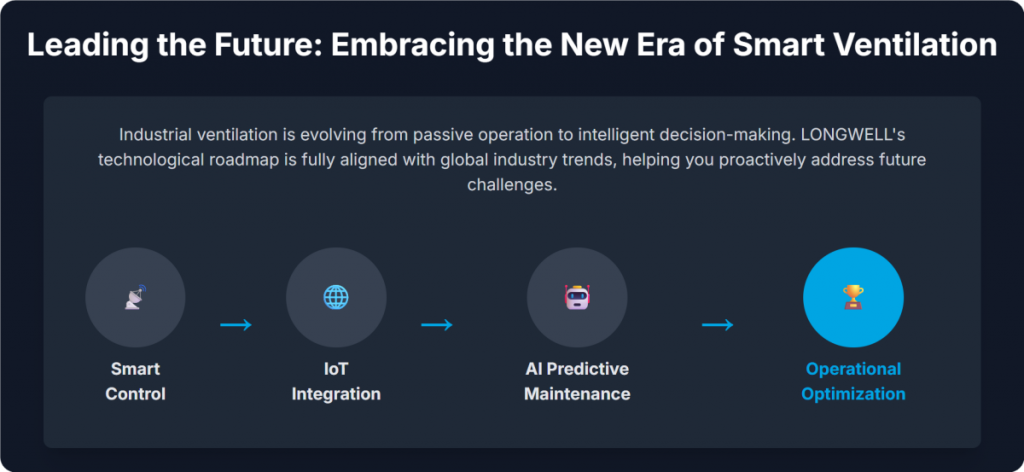
Regulatory Changes: Energy Efficiency Standards and Environmental Emission Requirements
Global and national governments’ increasingly stringent regulations on energy efficiency and environmental emissions are reshaping the industrial ventilation industry.
· Evolution and Impact of Global Energy Efficiency Standards: The global push for energy-saving and environmentally friendly solutions is one of the main drivers of the industrial ventilation market. China has implemented Minimum Energy Performance Standards (MEPS) since 1989 and continuously updates and revises these standards to reflect technological advancements in the market, while emphasizing mandatory energy information labels. In 2024, China issued new energy efficiency specifications, including 23 key energy-consuming products (such as data centers, industrial boilers) under regulation and raising energy efficiency requirements for permanent magnet synchronous motors and unitary air conditioners. In the United States, the Department of Energy (DOE) and the California Energy Commission (CEC) have also implemented or proposed energy efficiency regulations for commercial and industrial fans and blowers, introducing new metrics like Fan Efficiency Grade (FEG) and Fan Efficiency Index (FEI) to drive the industry towards higher efficiency. These regulations are not just a “burden” for businesses; they are reshaping the entire industrial ventilation market, phasing out inefficient products, and driving technological innovation. LONGWELL’s EC motor technology naturally complies with, and even surpasses, these increasingly stringent energy efficiency standards, giving it a significant advantage in terms of compliance. By highlighting its products’ performance in energy saving and pollutant control, LONGWELL can transform its “compliance” into a “competitive advantage,” attracting global customers who seek long-term compliance and sustainable operations.
· Increasingly Strict Environmental Emission Requirements and Industry Response: Countries worldwide are facing the immense challenge of synergistic reduction of air pollutants and CO2 emissions. China has issued a series of policies, such as the “Opinions on Deeply Fighting the Battle Against Pollution,” actively promoting synergistic pollution and carbon reduction. Since 2013, China’s air pollutant emissions have rapidly decreased, and the annual average PM2.5 concentration has significantly declined. In the United States, the Clean Air Act (CAA) requires the Environmental Protection Agency (EPA) to set limits on air pollutants and authorizes restrictions on emissions from major sources like chemical plants, utilities, and steel mills. These regulations are not just a “burden” for businesses; they are reshaping the entire industrial ventilation market, phasing out inefficient products, and driving technological innovation. LONGWELL’s EC motor technology naturally complies with, and even surpasses, these increasingly stringent energy efficiency standards, giving it a significant advantage in terms of compliance. By highlighting its products’ performance in energy saving and pollutant control, LONGWELL can transform its “compliance” into a “competitive advantage,” attracting customers who seek long-term compliance and sustainable operations, especially in regulation-driven markets like China.
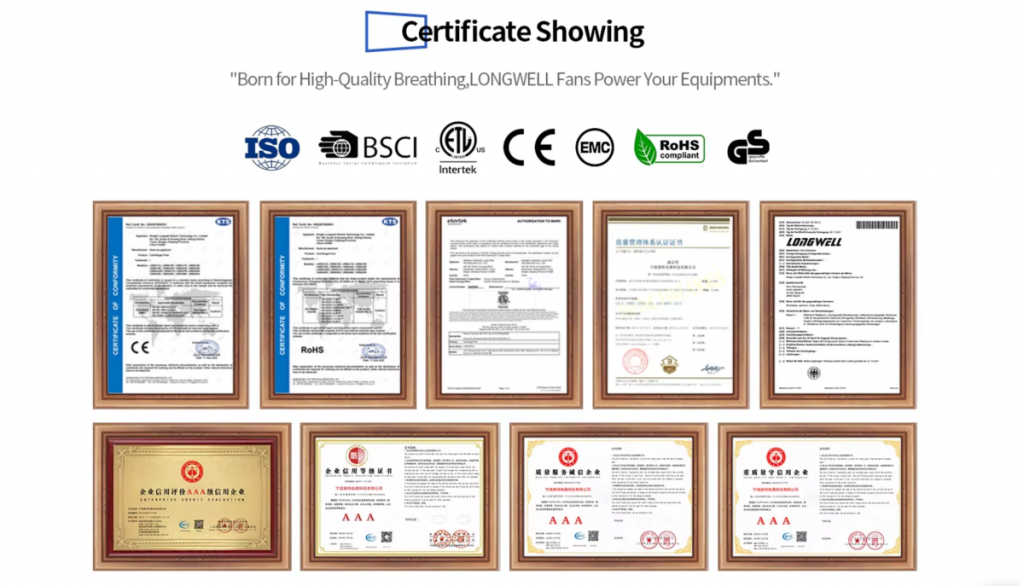
Market Demand: Sustainability, Energy Saving, and Customization
Modern industrial customers’ demands for ventilation systems are no longer limited to basic functions but are increasingly shifting towards a comprehensive pursuit of sustainability, energy saving, and customized solutions.
· Global Industrial Customers’ Pursuit of Green, Efficient Solutions: The global market demand for energy-efficient and sustainable ventilation solutions is continuously growing, primarily driven by global concerns for sustainability and rising energy costs. The growth of the industrial fan market is also propelled by industrial expansion, worker safety, and environmental condition-related regulations, prompting businesses to invest more in efficient air movement technologies. Customers not only want to reduce operating costs but also aim to enhance their corporate image by adopting energy-saving and environmentally friendly equipment, meeting increasing corporate social responsibility requirements.
· How LONGWELL Meets Diverse, Customized Market Demands: LONGWELL deeply understands the diversity of global market demands and therefore provides highly customized solutions. The company can adjust fan size, material, airflow, and control features according to specific customer needs, making LONGWELL’s products highly suitable for complex applications with specific customization requirements. For example, for corrosive environments, LONGWELL can provide fans made of special materials; for space-constrained locations, compact designs can be offered. Additionally, LONGWELL provides comprehensive technical support and after-sales service, from initial consultation to installation, troubleshooting, and maintenance, ensuring customers receive professional assistance throughout the product lifecycle. Global market demand has shifted from single functions to a comprehensive pursuit of “sustainability,” “energy saving,” and “customization.” This requires suppliers to offer solutions, not just products. LONGWELL meets energy-saving demands through its EC motor technology, and customized demands through its diverse product lines and materials, emphasizing its comprehensive technical support. This “solution-oriented” strategy elevates LONGWELL from a mere equipment manufacturer to a “strategic partner” for customers in achieving their sustainability and operational optimization goals, thereby building deeper, more lasting customer relationships.
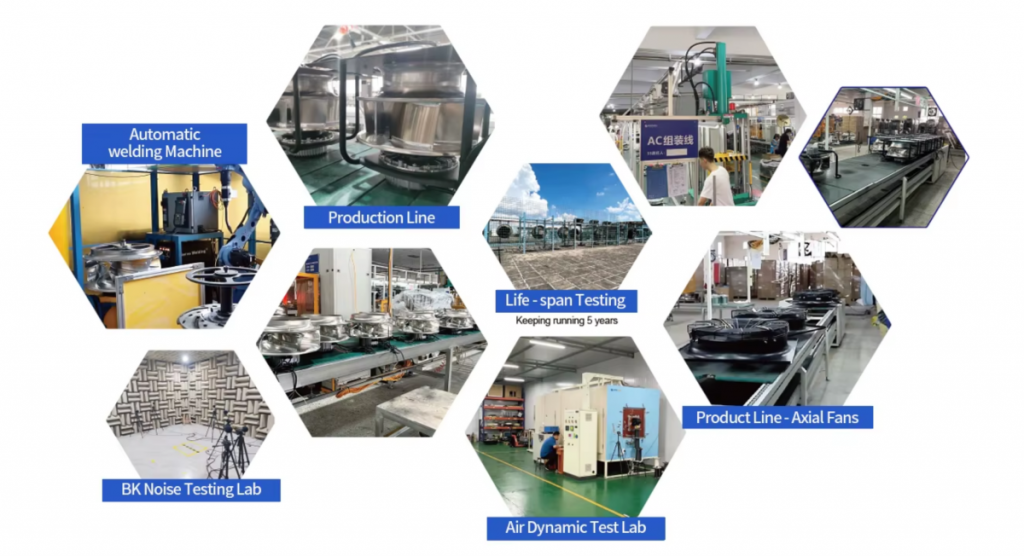
LONGWELL’s Market Leadership Strategy for the Next 5 Years
Facing the rapidly evolving trends in the global industrial ventilation industry, LONGWELL has formulated a clear market leadership strategy for the next 5 years, aimed at consolidating its existing advantages and exploring new growth points.
· Product Innovation and Technology Upgrades: LONGWELL will continue to invest in R&D for EC motors, intelligent control, and AI integration technologies. This will include launching new generations of more efficient, smarter, and quieter industrial fan products to meet the growing global market demand for high performance and low energy consumption. The company will also deepen collaborations with IoT platforms and AI algorithm providers to develop more predictive and adaptive ventilation systems, achieving true intelligent air management. Furthermore, for the unique needs of specific high-risk industries (such as chemicals and mining), LONGWELL will focus on developing specialized fans and customized solutions, such as explosion-proof, corrosion-resistant, and high-temperature resistant products, to provide safer and more reliable professional-grade solutions.
· Global Market Expansion and Service Optimization: LONGWELL will continue to solidify its market leadership in China and the Asia-Pacific region, fully leveraging the industrialization growth potential in these areas. Simultaneously, the company will actively expand into North American, European, and other emerging industrialized country markets, seeking new growth opportunities. To better serve global customers, LONGWELL will strengthen its local sales and technical support teams, providing more timely and professional pre-sales consultation and after-sales service. By optimizing service response speed and professionalism, LONGWELL aims to enhance customer satisfaction and loyalty. In terms of brand promotion, LONGWELL will fully utilize online channels (such as its official website, social media) and offline exhibitions to enhance its international brand recognition and influence.
· Brand Building and Ecosystem Collaboration: To reinforce LONGWELL’s position as a thought leader in the global industrial ventilation sector, the company will continuously output professional knowledge and industry insights through content marketing formats such as case studies, technical white papers, and industry reports. Additionally, LONGWELL will actively establish strategic partnerships with global enterprises in green building, smart manufacturing, and industrial automation to jointly create integrated solutions, expand its market ecosystem, and achieve mutual benefit. Finally, the company will continue to emphasize LONGWELL’s social responsibility in energy saving, environmental protection, and employee health, enhancing brand reputation and attracting more customers and partners who prioritize sustainable development.
V. Conclusion: LONGWELL – A Reliable Partner in Industrial Ventilation
In the increasingly complex and stringent global industrial environment, efficient, safe, and environmentally friendly ventilation systems have become an indispensable core competency for businesses. Ningbo Longwell Electric Co., Ltd. (LONGWELL), with its years of deep cultivation and innovation in the industrial ventilation sector, has emerged as a reliable partner in addressing these challenges.
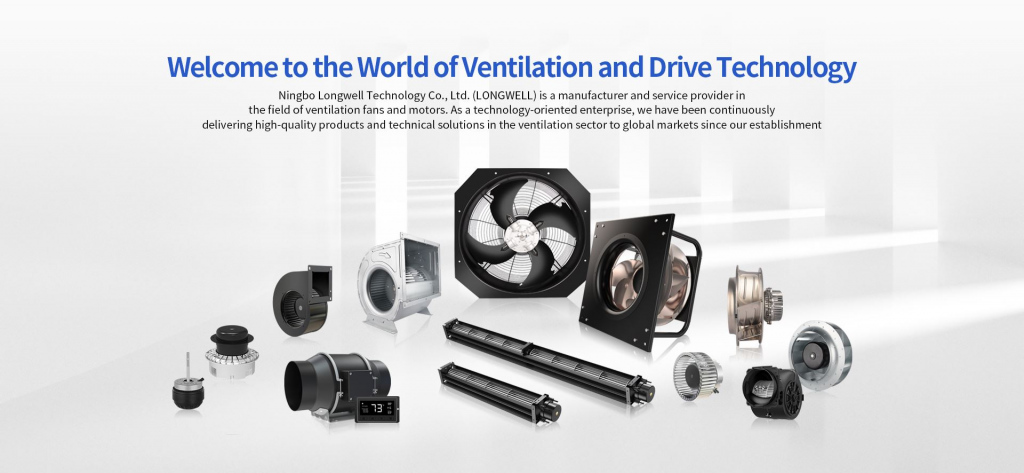
LONGWELL’s core strength lies in its exceptional EC motor technology, which not only delivers significant energy efficiency improvements but also enables precise speed control and low-noise operation. Combined with advanced intelligent control systems, LONGWELL’s fan products can monitor performance in real-time, pre-alert potential faults, and seamlessly integrate into building management systems, thereby greatly reducing operating costs and maintenance requirements. Furthermore, LONGWELL’s relentless pursuit of product durability and safety, through robust material selection, multiple safety certifications, and built-in protection mechanisms, ensures that its fans provide reliable, long-lasting, and safe performance even in the most demanding industrial environments.
LONGWELL deeply understands the core challenges faced by global industrial customers, including high energy consumption, noise pollution, substandard air quality, high maintenance costs, and safety hazards. By offering a diverse range of fan types (such as backward-curved centrifugal fans, radial fans, axial fans, and exhaust fans) and customized materials for specific environments (e.g., humid, corrosive, dusty), LONGWELL can provide precise and efficient solutions for customers across various global industries, including manufacturing, chemicals, and mining. This solution-oriented strategy enables LONGWELL not only to help customers meet increasingly stringent energy efficiency standards and environmental emission requirements but also to transform its “compliance” into a “competitive advantage,” assisting customers in achieving operational optimization, cost savings, and enhanced employee well-being.
Looking ahead, LONGWELL will continue to lead global industry trends, deepening its technological investments in smart ventilation, IoT, and AI integration, upgrading fan products from mere devices to intelligent air management solutions. Through continuous product innovation, global market expansion, and ecosystem collaboration, LONGWELL will consolidate its market leadership in the Asia-Pacific region and actively expand into other major global markets.
Choosing LONGWELL means choosing a partner committed to innovation, quality, and sustainable development. LONGWELL looks forward to collaborating with global industrial enterprises to jointly build a healthier, more efficient, and more sustainable industrial future.
To learn more about LONGWELL products and customized solutions, please visit LONGWELL’s official website: https://www.longwellfans.com.
